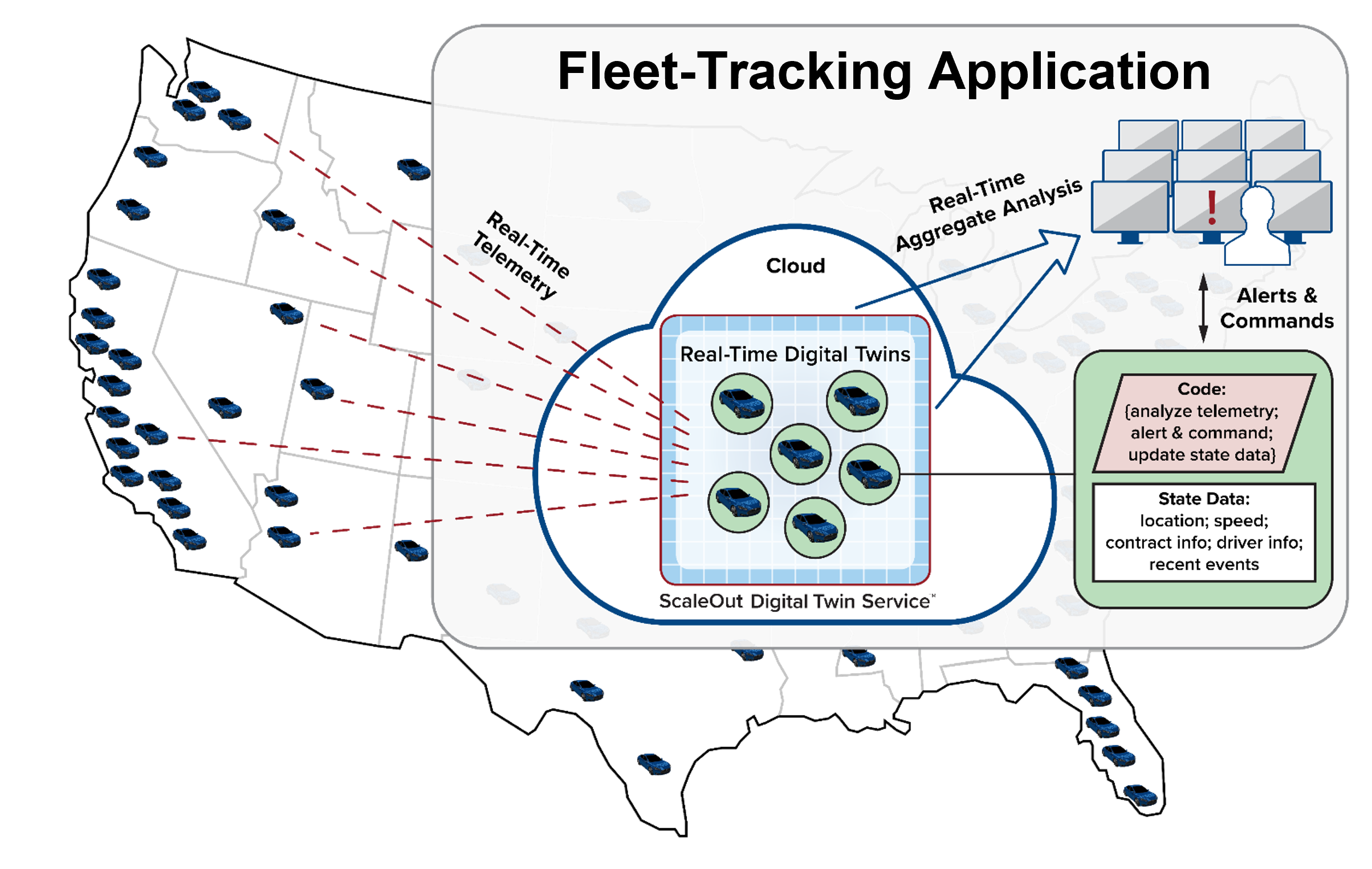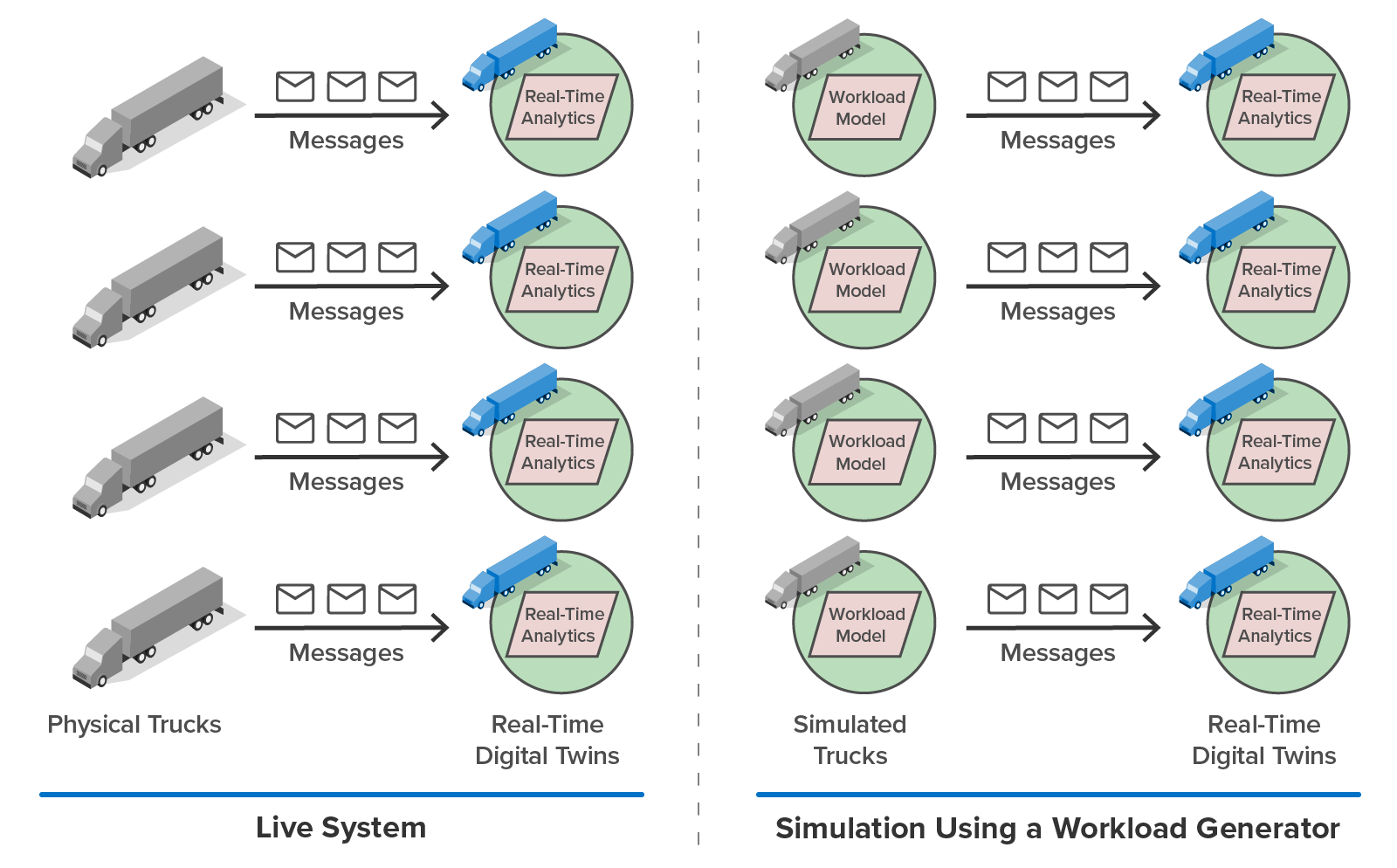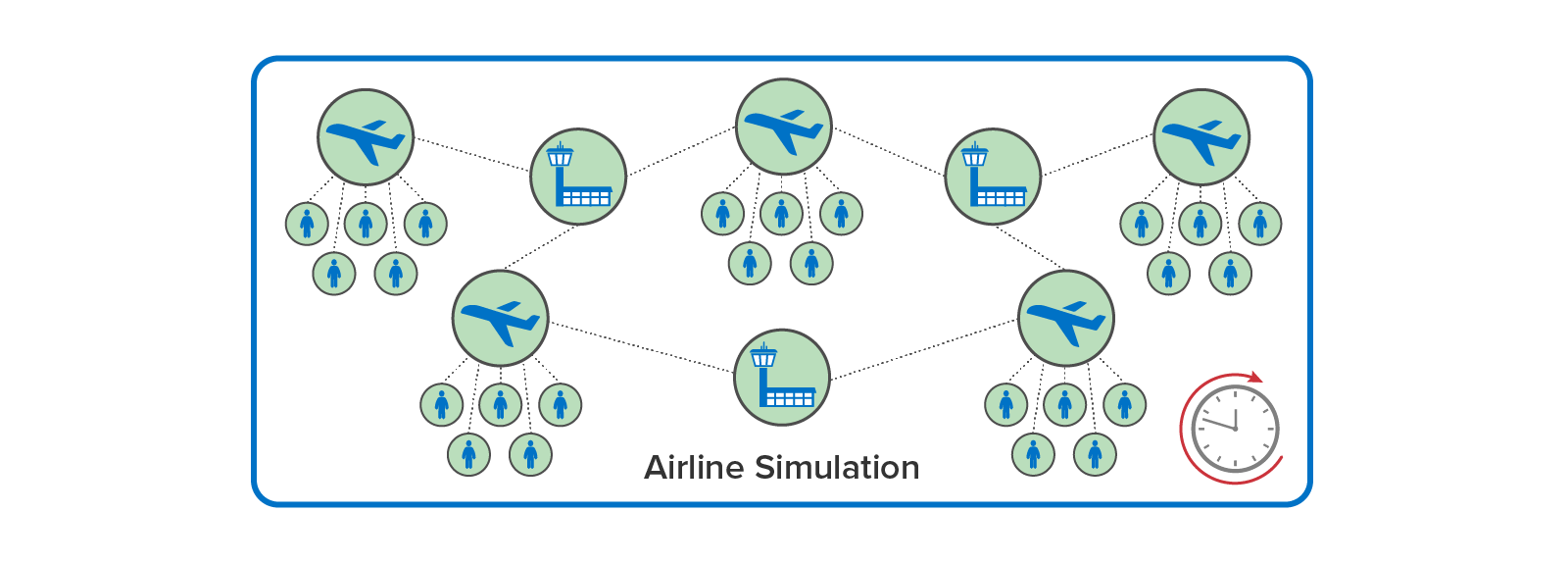
Introduction
Use Digital Twins for Both Streaming Analytics and Simulation
ScaleOut Digital Twins™ is a new cloud and on-premises service that harnesses the power of digital twins for both live streaming analytics and simulation. You can use this service to build applications that simultaneously track telemetry from many thousands or even millions of data sources in real time to identify issues and opportunities and provide highly targeted feedback. You can also build time-driven simulations with large numbers of interacting entities. You can use simulations to validate streaming analytics prior to deployment in live systems or to build models that assist in making design choices and predictions.
ScaleOut Digital Twins adds unique value for applications which need to intelligently monitor or model in simulation large number of devices and data sources, track and analyze important state changes for each data source, and quickly identify emerging opportunities and threats using real-time aggregate analytics. Typical applications include IoT, fleet and asset tracking, disaster recovery, security, health-device tracking, financial services, crime prevention, and ecommerce.
Digital twins add important new capabilities for application developers while also simplifying implementation. Their ability to maintain state and run customized code for every device or data source enables deeper introspection and simulation modeling than previously possible. When used for real-time analytics, they can respond to incoming telemetry from individual data sources within within 1-3 milliseconds and generate aggregate statistics every 5 seconds. When used for simulation, they allow developers to focus on device behavior and eliminate the need to deal with issues such as orchestration, scaling, and high availability.
The ScaleOut Digital Twins service hosts digital twin applications developed using the ScaleOut Digital Twin Builder™ software toolkit or the ScaleOut Model Development Tool™. For real-time analytics, the service connects to data sources using popular event hubs, such as Microsoft Azure IoT Hub, Amazon AWS IoT Core, and Azure Kafka, and it also allows connections via an integrated REST messaging service. It also provides seamless integration with Microsoft’s Azure Digital Twins, adding the ability to process incoming telemetry much faster and at greater scale than otherwise possible. Built using ScaleOut’s patented, in-memory computing technology, the streaming service’s execution platform transparently and cost-effectively scales to track millions of data sources.
To maximize situational awareness in both real-time analytics and simulation, the cloud service’s user interface (UI) enables the creation of continuous real-time aggregate analytics across thousands of digital twins with graphical updates every few seconds. Aggregate results also can be streamed to external visualization platforms, such as Microsoft Power BI. State information stored within real-time digital twins can be queried to report dynamic changes in the state of data sources to the UI.
An Example of Using Digital Twins for Streaming Analytics
The following diagram illustrates the use of the ScaleOut Digital Twins to track geographically distributed vehicles in a fleet using digital twins for a telematics application. The digital twins receive telemetry from individual trucks, analyze it, and generate alerts or feedback if necessary.The service also continuously extracts and aggregates information from the digital twins in real time to boost situational awareness. When used for streaming analytics, we call these digital twins real-time digital twins:

Examples of Using Digital Twins for Simulation
Digital twins also can be used to build a workload generator that runs in simulation to testing real-time analytics. For comparison purposes, the following diagram shows a live system on the left in which real-time digital twins track a fleet of trucks (with each twin analyzes telemetry from a specific truck), and it shows on the right a simulation in which digital twins simulate the behavior of trucks and generate telemetry messages. These simulation digital twins send messages to their corresponding real-time digital twins to test and evaluate real-time analytics. The simulated trucks can be parameterized to model various behaviors, such as a lost truck, mechanical issue, or an erratic driver. Once the real-time analytics has been thoroughly evaluated in simulation, it can then be deployed in a live system.

Digital twins can also model entities in a pure simulation used to assist in design and prediction. For example, an airline simulation might need to model passengers, aircraft, airport gates, and air traffic sectors to assess the impact of weather delays, outages such as ground stops, schedule changes, and more. Digital twins can maintain state information about the physical entities they represent, and they can run code at each time step in the simulation model’s execution to update their state. They also can exchange messages to model interactions. Here is a depiction of an airline tracking simulation:

Roadmap for this User Guide
The next topic provides an overview of ScaleOut’s digital twin model and explains its advantages for use in building applications for real-time analytics and simulation. This topic also describes advanced features, including machine learning for analyzing incoming messages and optional integration with the Azure Digital Twins service. The following topic describes the ScaleOut Digital Twin Builder software toolkit, which provides APIs and libraries for building real-time digital twins in C# and Java, and the topic ScaleOut Model Development Tool explains how to build real-time digital twins using an intuitive rules engine or with no-code machine learning using Microsoft’s ML.NET library. The Connectors topic explains how to connect data sources, such as IoT devices, to the ScaleOut Digital Twins service using multiple popular event hubs, such as Azure IoT Hub, or REST. It also explains how to optionally connect to the Azure Digital Twins service to integrate with that service. The UI Overview topic gives a tour of the service’s user interface, which lets users deploy digital twin models, deploy connectors for real-time analytics or start simulations, build widgets to graphically display real-time, aggregate statistics, examine digital twin instances, and manage the deployment. The last topic provides an overview of APIs that can be used to deploy digital twin models and connectors on-premises using ScaleOut StreamServer® without the UI.
Note
The ScaleOut Digital Twins UI can be accessed in the Microsoft Azure cloud or deployed on premises alongside ScaleOut StreamServer.
ScaleOut Digital Twins is available for production use. We encourage you to contact ScaleOut Software (sales@scaleoutsoftware.com) to learn more and to provide feedback. This will enable you to access the service’s UI and start building applications using this revolutionary new approach to real-time streaming analytics and simulation.